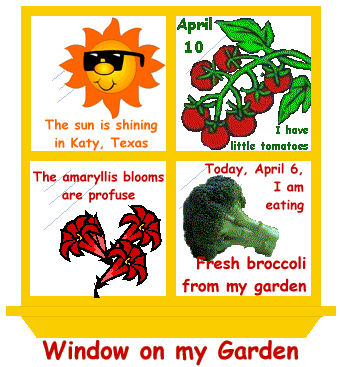|
|
|
|
|
|
|
|
|
|
|
|


 No, this is not a page about gardening during Christmas. It is, however, a schedule to do gardening tasks when holidays occur. This is a method I use to help me remember certain chores at the right time of the year. It is set up for Zone 8b with a frost free date of March 6 and a frost date of December 6, so you'll need to make adjustments for other zones. Zone 8b is the upper Gulf Coast region and it runs San Antonio east to the Atlantic at the Georgia-Florida line. As you can tell, the schedule is under construction, so "grow" along with me. Feel free to make suggestions, corrections and even criticisms, they are all welcome.
|
| New Years Day, January 1st | |
 |
Plant these vegetables now: Mustard
| Martin Luther King, Jr., Birthday, January 15th |  |
Plant these vegetables now: broccoli seeds, cabbage, carrots, collards seeds, endive, kohlrabi seeds, lettuce, onion sets, parsley plants, English peas and turnips
|
Groundhog's Day, February 2nd |
Plant these vegetables now: beets, broccoli plants, Swiss Chard, collard plants, kohlrabi seeds, radishes, turnips |
Saint Valentine's Day, February 14th |  |
Plant these vegetables now: potatoes, radishes, spinach
|
Texas Independence Day, March 2 |  |
Plant these vegetables now: bush green beans, pole green beans, sweet corn, cucumbers, tomatoes
|
Saint Patricks Day, March 17 |  |
Plant these vegetables now: pole lima beans, muskmelons, pepper plants, pumpkins, summer squash, winter squash
|
April Fools' Day, April 1 |  |
Plant these vegetables now: eggplant, okra, watermelon
|
Easter, April 4 |  |
|
garden.Com
HGTV.Com
Homearts.com
Better Homes and Gardens
| | Home | Trains | Carolyn's Page | Family Tree | PIX | Political | Just Kids | Kitchen | Garden | Holidays | Site Map | |
